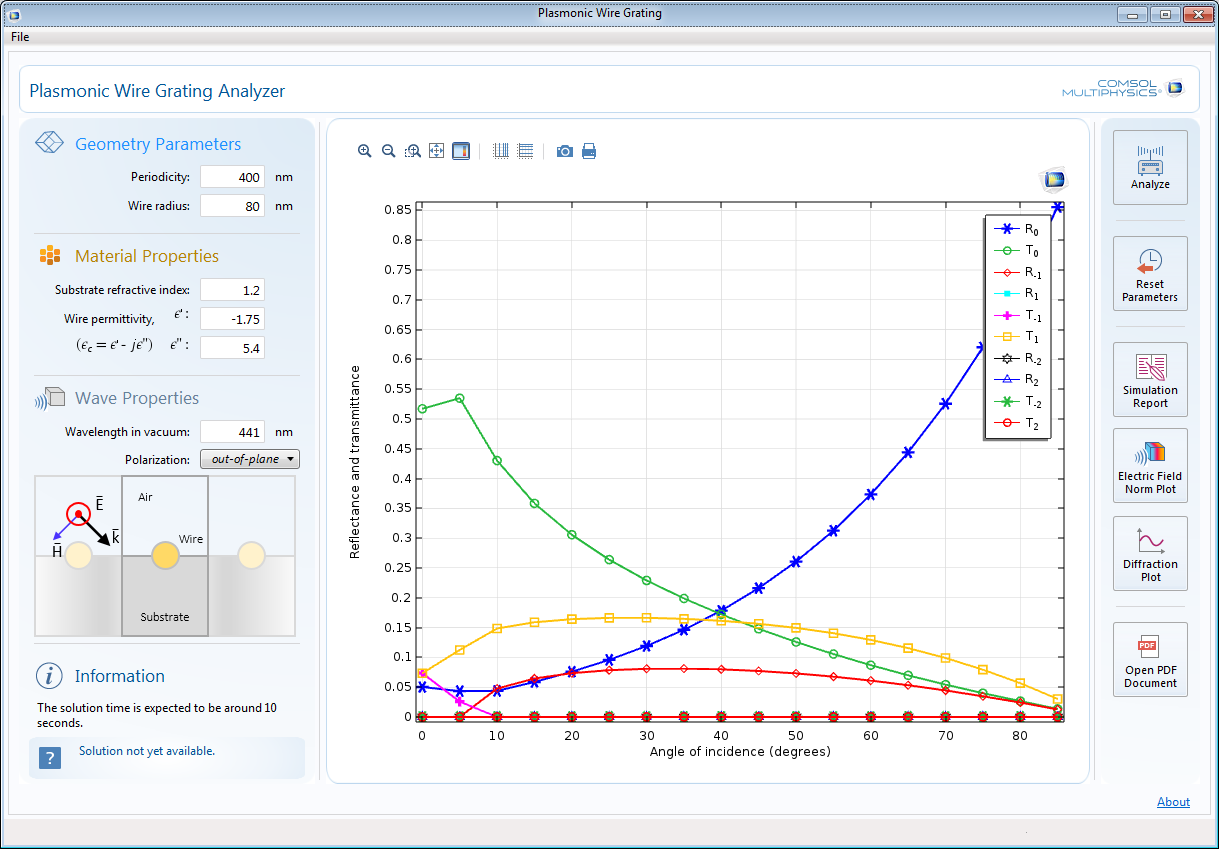
The Previous Solution feature added to the Solver Configuration. This is done within the Solver Configurations. Lastly, we need to specify that this equation should be evaluated at the previous time step. The nojac() operator is needed, since we do not want this equation to contribute to the Jacobian (the system matrix). The screenshot above shows the equation that stores the temperature solution at the previous time step. The equation being solved by the Domain ODEs and DAEs interface. The name of the field variable here is left at the default “u”, although you can rename it to anything you would like. You will always want to make sure that you are using the appropriate discretization. The discretization is set to a Lagrange Quadratic, which matches the discretization used by the Heat Transfer in Solids interface. It is a good modeling practice to appropriately set units. Note that the units of both the dependent variable and the source are set to Temperature. The screenshot above shows the relevant settings for the Domain ODEs and DAEs interface. The Domain ODEs and DAEs interface for tracking the solution at the previous time step.

If we were only interested in the previous solution across a boundary, edge, or point, or in some global quantity, we could also use a Boundary, Edge, Point, or Global ODEs and DAEs interface. The first step is to add a Domain ODEs and DAEs interface to the model, since we will be interested in tracking the solution at the previous time step throughout the volume of the part. Let us take a look at the implementation in terms of a transient heat transfer example: The laser heating of a wafer with a moving heat load, solved on a rotating coordinate system. You must add an ODE and DAE interface to store the fields that you are interested in and you must add the Previous Solution feature to the Time-Dependent Solver. Using the Previous Solution operator requires only two additional features within the model tree. Implementing the Previous Solution Operator in COMSOL Multiphysics Let us take a look at how you can implement and use this Previous Solution operator in a transient model in COMSOL Multiphysics. This Previous Solution operator is available for both transient as well as stationary problems solved using the continuation method. The Previous Solution operator makes the solution at the previous time step available as a field variable in the model. However, these previous solutions are not by default accessible within the model. These algorithms use the solutions at several previous time steps (up to five) to numerically approximate the time derivatives of the fields and to predict the solution at the next time step.

Two classes of time-stepping algorithms are available: a backward difference formula (BDF) and a generalized-alpha method.
COMSOL 5.1 PRESENTATION SOFTWARE
This has the advantage of being unconditionally stable for many classes of problems and it lets the software choose the optimal time step size for the specified solver tolerances, thereby reducing the computational cost of the solution. When you are solving a transient model, the COMSOL software by default uses an implicit time-stepping algorithm with adaptive time step size. Let us take a look at how this operator is implemented and then examine how it can be used for various modeling needs. This operator allows you to evaluate quantities at the previous time step when using the default implicit time-stepping algorithm. COMSOL Multiphysics version 5.1 includes a Previous Solution operator within time-dependent studies.


 0 kommentar(er)
0 kommentar(er)
